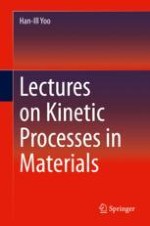2020 | OriginalPaper | Buchkapitel
7. Diffusion in Ionic Solids
verfasst von : Han-Ill Yoo
Erschienen in: Lectures on Kinetic Processes in Materials
Aktivieren Sie unsere intelligente Suche, um passende Fachinhalte oder Patente zu finden.
Wählen Sie Textabschnitte aus um mit Künstlicher Intelligenz passenden Patente zu finden. powered by
Markieren Sie Textabschnitte, um KI-gestützt weitere passende Inhalte zu finden. powered by
